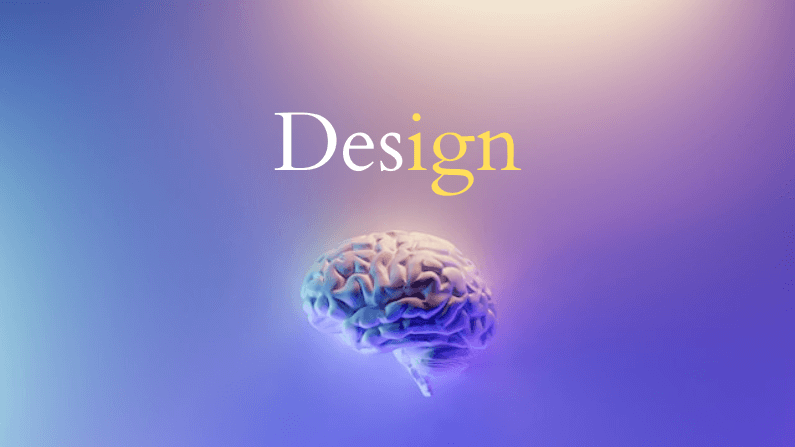This article presents a summary of three research papers that explore important topics related to business innovation, academic-practitioner collaboration, and inclusive service design. The summary was written during a master’s degree course as an assignment. The references to these papers are provided at the end of the article for readers interested in further reading.
Introduction:
As businesses with multi-dimensional models (M-models) now seek to integrate triadic approaches (T-models), design thinking has become an essential factor to consider when creating frameworks for operations. Design thinking prioritizes human-centred and inclusive approaches and encourages organizations to focus on the people they are creating for. This results in better products, services, and internal processes. When brainstorming solutions with a team, it is essential to prioritize addressing human needs first. Integrating the human point of view or human inclusion with technologically feasible and economically viable solutions will yield robust and efficient long-term solutions.

The Triadic Approach,
Also known as the T-Model, is based on the idea of three major stakeholders: Customers, Suppliers, and platforms. This approach has gained importance as businesses with multi-dimensional models seek to integrate it into their framework for operations. Before diving into the T-Model, it is essential to understand the Multidivisional Structure or M-Model. In an M-Model, a parent company owns several divisions that operate independently. In contrast, the T-Model aims to create value by facilitating interactions and transactions between multiple actors via a platform. This approach has disrupted established industries that rely on the M-Model. Many of the world’s most valuable companies are proponents of the T-Model, acting as intermediaries between buyers and suppliers. This article explores the T-Model and its significance in modern business through an interesting image from a Reddit community.

Image source: Reddit
The Emergence of the T-Model and Service Domain Logic: My personal experience with UberEATS:
Something interesting is happening in the business world with the emergence of the T-model, which replaces middlemen with platforms that create a common ground for suppliers and customers to co-create value. However, creating a technologically feasible and economically viable platform alone is not enough. Companies also need to consider Service Domain Logic, where all stakeholders involved inside and outside the platform can co-create value while considering Eco service domain logic.
As an example, one Sunday night, I forgot to keep track of time while going through different paper readings for Monday’s class. I was lazy and used UberEATS to find a “buy one get one free” offer. I read reviews and starred my favourite restaurants. The app even offered discounts of up to 30% on orders above $50. The delivery process was efficient, and I could track the delivery guy until he arrived at the door. I was impressed by the human touch in the delivery process. The platform was able to build trust among suppliers with reviews, and the delivery guy’s efficiency was reflected in feedback and reviews. I received an e-bill and was given the option to checkmark for a fork and knife. I was happy to contribute to sustainability a bit.
In the triadic model, trust is often considered the currency of the platform economy, and organizations should foster trust among platform users rather than exerting control. Creating a norm and a community feeling among platform users through socialization tactics such as events or online communities and social media is the most used tactic.
Practitioners’ and Academics’ perspectives:

Practitioners are primarily interested in solving their organization’s urgent issues, whereas academic research aims to develop general knowledge that can be applied beyond a specific empirical context (Avenier and Cajaiba, 2012; Busse et al., 2017). Academics can test their theoretical assumptions in various contexts and draw insights from them. These insights can help managers to gain a broader perspective, not just for their own corporation but also in a more general sense. The main challenge for practitioners is not obtaining sufficient data, but rather making intelligent use of existing data to generate valuable insights (Kumar et al., 2013). This is where academics can make a significant contribution by delving deep into the data, analyzing patterns, and identifying structures. With the help of AI and machine learning, they can convert data into insights that are useful for decision-making, optimization, predictions, and innovation.
Co-creation of value between practitioners and academics
Practitioners and academics may have different views on research problems, but joint workshops and events can help them develop research questions together. In the article “Bridging the data divide between practitioners and academics”, it is suggested that co-creation is important to identify a specific research question that addresses important managerial issues while having the potential for theoretical conclusions. Academics need to be flexible and convince companies to select a specific question from a more general problem area.
Designing services that promote “service inclusion” is important.
Service inclusion refers to an egalitarian system that provides fair access, treatment, and opportunities to exit a service to customers such as consumers, clients, and patients. This concept comes from transformative service research (TSR), which focuses on improving consumer and societal welfare through service. By understanding human needs for inclusion and designing services accordingly, we can improve human progress.
Service Exclusion in the Past.
In the past, humans have been excluded from services based on characteristics such as age, gender, race, ethnicity, income, health, cognitive capacity, emotional intelligence, illness, addiction, disabilities, religion, customs, and other factors. Although social exclusion may never be fully eliminated, designing service solutions that respond to human diversity and providing resources to facilitate access to services can significantly reduce service exclusion. This can improve individual well-being and quality of life for the population.
The four pillars of service inclusion
Each pillar below is necessary, but individually insufficient, for the achievement of service inclusion. It is only by nurturing and cultivating all four pillars that true service inclusion can occur.

- Andreassen, T.W., L. Lervik-Olsen & H. Snyder, Allard C.R. Van Riel, J.C. Sweeney & Y. Van Vaerenbergh (2018). Business model innovation and value-creation: the triadic way. Journal of Service Management, 29(5), 883-906.
- Benoit, S., S. Klose, J. Wirtz, T. W. Andreassen, T.L. Keiningham (2019). Bridging the data divide between practitioners and academics. Journal of Service Management, 30(5), 524-548.
- Fisk, R.O., A.M. Dean, L. Alkire, A. Joubert, J. Previte, N. Robertson, M. Scott Rosenbaum (2018). Design for service inclusion: creating inclusive service systems by 2050. Journal of Service Management, 29(5), 776-808.
Also, read rise of service-dominant Logic by bpandey.com




